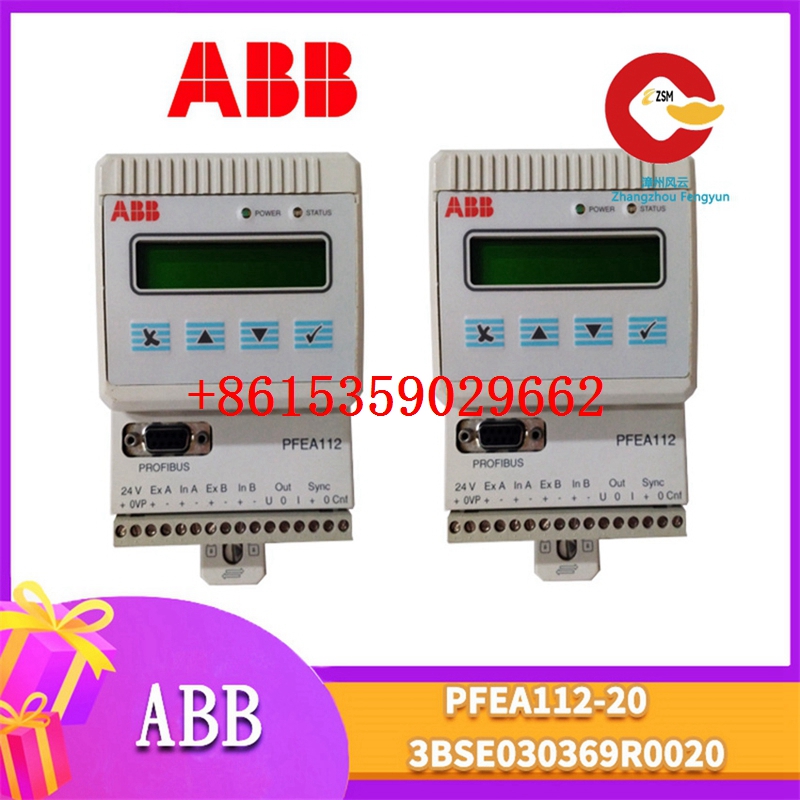Technical Parameters of ABB 4641/800 Dissolved Oxygen Monitors Transmitter

1. General Overview
The ABB 4641/800 Dissolved Oxygen Monitors Transmitter is a sophisticated instrument designed for precise and reliable measurement of dissolved oxygen levels in various industrial and environmental applications. It offers advanced features and high – accuracy performance to meet the stringent requirements of modern monitoring systems.
2. Measurement Parameters
- Measurement Range: The transmitter can measure dissolved oxygen concentrations over a wide range, typically from 0 ppb (parts per billion) up to a maximum value, often reaching 20 ppm (parts per million) or higher, depending on the specific model configuration and sensor used. This broad range allows it to be suitable for applications ranging from ultra – pure water systems in the semiconductor industry to wastewater treatment plants.
- Accuracy: It provides high – accuracy measurements, with an accuracy specification that can vary slightly based on the operating conditions and calibration. Generally, the accuracy is within ±(1 – 2)% of the measured value or ±(a few) ppb (whichever is greater) over the entire measurement range. This ensures reliable and consistent data for process control and quality assurance.
- Resolution: The instrument offers a fine resolution, allowing for the detection of small changes in dissolved oxygen levels. For example, it may have a resolution as low as 0.01 ppm or 1 ppb, depending on the model and measurement range selected.
3. Sensor Characteristics
- Sensor Type: The 4641/800 typically uses a polarographic or optical dissolved oxygen sensor. Polarographic sensors operate based on the principle of electrochemical reduction of oxygen at a cathode, while optical sensors rely on the fluorescence quenching effect of oxygen on a luminophore. Both types of sensors have their advantages, with polarographic sensors being well – established and relatively cost – effective, and optical sensors offering longer lifespan and less interference from certain substances.
- Sensor Lifespan: The lifespan of the sensor varies depending on the type and operating conditions. Polarographic sensors may have a lifespan of 1 – 2 years under normal use, while optical sensors can last 2 – 3 years or even longer with proper maintenance.
- Temperature Compensation: The transmitter incorporates a built – in temperature compensation feature. Since the solubility of oxygen in water is highly temperature – dependent, the instrument automatically adjusts the measured dissolved oxygen value based on the water temperature, which is typically measured by an integrated temperature sensor or an external temperature input. This ensures accurate and consistent readings regardless of temperature variations.
4. Electrical and Communication Specifications
- Power Supply: The transmitter can be powered by a range of DC voltages, commonly 24 VDC. It has low power consumption, making it suitable for remote or battery – powered applications in some cases.
- Output Signals: It provides multiple output signal options to interface with various control systems and data acquisition devices. Standard output signals include 4 – 20 mA analog output, which is widely used in industrial automation for transmitting the measured dissolved oxygen value over long distances. Additionally, it may offer digital communication protocols such as HART (Highway Addressable Remote Transducer), which allows for two – way communication between the transmitter and a host system, enabling remote configuration, calibration, and diagnostics.
- Display: The instrument is equipped with a clear and easy – to – read display. It can show the measured dissolved oxygen value, temperature, and other relevant parameters in real – time. The display may also have additional features such as alarm indicators, calibration prompts, and menu – driven navigation for easy operation.
5. Environmental and Mechanical Specifications
- Operating Temperature Range: The transmitter can operate in a wide temperature range, typically from – 20°C to + 60°C (or – 4°F to + 140°F), depending on the model. This allows it to be used in various outdoor and indoor environments, including extreme climate conditions.
- Storage Temperature Range: For long – term storage, the recommended temperature range is usually wider, such as – 40°C to + 85°C (- 40°F to + 185°F), to ensure the integrity of the internal components.
- Protection Class: It has a high protection class, often IP66 or higher, which means it is dust – tight and protected against powerful water jets from any direction. This makes it suitable for installation in harsh and wet industrial environments.
- Housing Material: The housing is made of durable and corrosion – resistant materials, such as stainless steel or high – grade plastics, to withstand the effects of chemicals, moisture, and mechanical impact.
6. Calibration and Maintenance
- Calibration Frequency: Regular calibration is essential to maintain the accuracy of the dissolved oxygen measurements. The recommended calibration frequency depends on the application and the quality of the water being measured. In general, it is recommended to calibrate the transmitter every 1 – 3 months.
- Calibration Methods: The 4641/800 offers multiple calibration methods, including zero – point calibration (using a nitrogen – saturated water solution) and span calibration (using a water solution with a known dissolved oxygen concentration). The calibration process can be performed manually or automatically, depending on the instrument configuration.
- Maintenance Requirements: The sensor requires periodic cleaning to remove any fouling or biofilm that may accumulate on its surface, which can affect the measurement accuracy. Additionally, the transmitter may need occasional firmware updates to ensure optimal performance and access to the latest features.
In summary, the ABB 4641/800 Dissolved Oxygen Monitors Transmitter is a high – performance and reliable instrument that provides accurate dissolved oxygen measurements in a wide range of applications. Its advanced features, including precise measurement, multiple output options, and robust environmental protection, make it a popular choice in the industrial and environmental monitoring fields.


